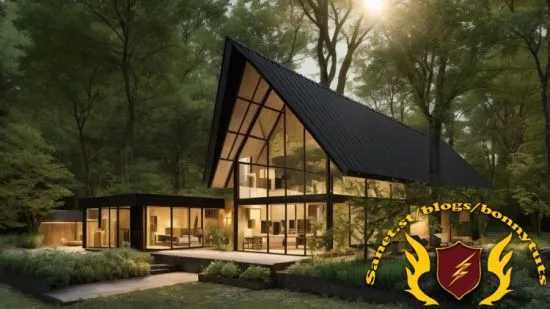Archviz with Blender and StableDiffusion
Creating exterior/interior Archviz images with Blender and StableDiffusion

What you'll learn:
Use a blender project to create a basic output image for AI rendering.
Learn how to install Krita and AI-Diffusion plugin
Learn how to Install and use Stablediffusion's Webui Forge and ComfyUI interfaces
Understand and use different Controlnet models to generate Archviz images.
Render image variants directly from blender with AI-render plugin.
Requirements:
Windows/Linux operating system, Nvidia Video Card.
Basic operating system knowledge/ Program Installation.
Knowing basic terminal/command prompt usage.
Basic Blender knowledge is recommended.
An Nvidia video card is recommended as most of the libraries are optimized for CUDA.
Description:
Using blender to load a project scene, we will learn how to prototype a basic image and enhance it generating different variants through the use of StableDiffusion AI.First we will install basic software requirements like Python and GIT to be able to clone the projects' repositories and compile them automaticallyNext we will install Blender and practice with an existing project to become familiar with the workflow and generate a basic image to work with AI. After that, we will install Krita and the plugin krita_ai_diffusion to load the image generated in Blender and start creating AI images based on our render. Once we are familiar with the basic concepts we will dive a little deeper and install Webui Forge and ComfyUI, two of the most renown and versatile StableDiffusion interfaces.We will install the required controlnet models to take advantage of them in Archviz. We will learn how to render images both in Webui Forge and ComfyUI and compare the results between both interfaces. Workflows for ComfyUI will be provided to help rendering the images with the different models.Finally, we will install the AI-Render plugin for Blender to learn how to render directly from the 3d program No advanced skills or knowledge required, the basic usage of each program will be explained and demonstrated in the course.
Who this course is for:
Designers, Architects, 3d enthusiasts, and any AI image generation fan that wants to explore the use of AI in architecture.
Published 6/2024
Created by Alvaro Celis
MP4 | Video: h264, 1280x720 | Audio: AAC, 44.1 KHz, 2 Ch
Genre: eLearning | Language: English | Duration: 12 Lectures ( 3h 46m ) | Size: 2.85 GB
Download
*
Creating exterior/interior Archviz images with Blender and StableDiffusion

What you'll learn:
Use a blender project to create a basic output image for AI rendering.
Learn how to install Krita and AI-Diffusion plugin
Learn how to Install and use Stablediffusion's Webui Forge and ComfyUI interfaces
Understand and use different Controlnet models to generate Archviz images.
Render image variants directly from blender with AI-render plugin.
Requirements:
Windows/Linux operating system, Nvidia Video Card.
Basic operating system knowledge/ Program Installation.
Knowing basic terminal/command prompt usage.
Basic Blender knowledge is recommended.
An Nvidia video card is recommended as most of the libraries are optimized for CUDA.
Description:
Using blender to load a project scene, we will learn how to prototype a basic image and enhance it generating different variants through the use of StableDiffusion AI.First we will install basic software requirements like Python and GIT to be able to clone the projects' repositories and compile them automaticallyNext we will install Blender and practice with an existing project to become familiar with the workflow and generate a basic image to work with AI. After that, we will install Krita and the plugin krita_ai_diffusion to load the image generated in Blender and start creating AI images based on our render. Once we are familiar with the basic concepts we will dive a little deeper and install Webui Forge and ComfyUI, two of the most renown and versatile StableDiffusion interfaces.We will install the required controlnet models to take advantage of them in Archviz. We will learn how to render images both in Webui Forge and ComfyUI and compare the results between both interfaces. Workflows for ComfyUI will be provided to help rendering the images with the different models.Finally, we will install the AI-Render plugin for Blender to learn how to render directly from the 3d program No advanced skills or knowledge required, the basic usage of each program will be explained and demonstrated in the course.
Who this course is for:
Designers, Architects, 3d enthusiasts, and any AI image generation fan that wants to explore the use of AI in architecture.
Published 6/2024
Created by Alvaro Celis
MP4 | Video: h264, 1280x720 | Audio: AAC, 44.1 KHz, 2 Ch
Genre: eLearning | Language: English | Duration: 12 Lectures ( 3h 46m ) | Size: 2.85 GB
Download
*